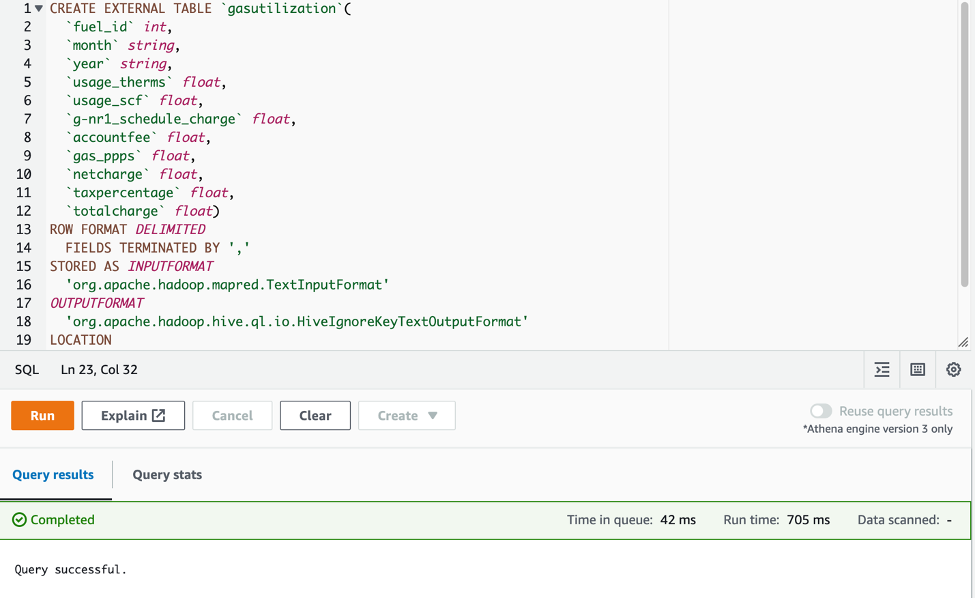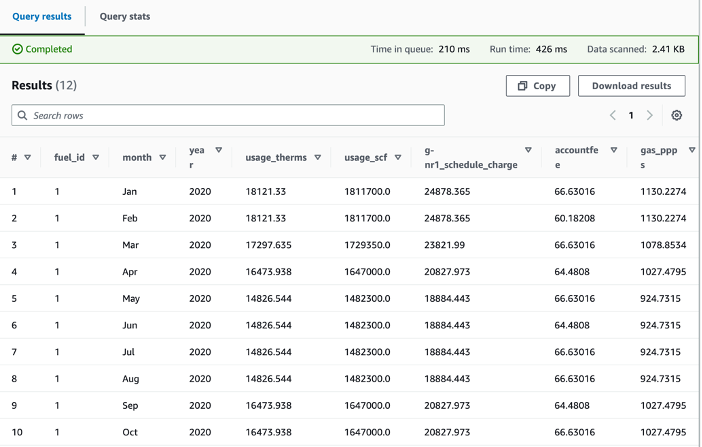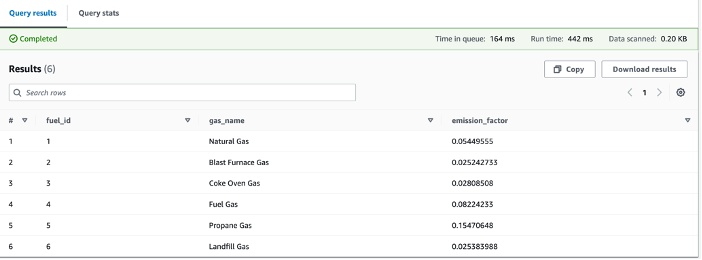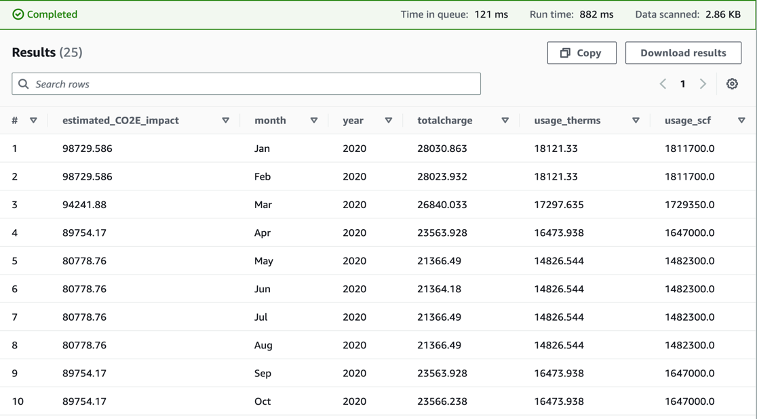Right now, greater than 400 organizations have signed The Local weather Pledge, a dedication to achieve net-zero carbon by 2040. A few of the drivers that result in setting specific local weather targets embrace buyer demand, present and anticipated authorities relations, worker demand, investor demand, and sustainability as a aggressive benefit. AWS prospects are more and more fascinated by methods to drive sustainability actions. On this weblog, we are going to stroll by way of how we are able to apply current enterprise knowledge to higher perceive and estimate Scope 1 carbon footprint utilizing Amazon Easy Storage Service (S3) and Amazon Athena, a serverless interactive analytics service that makes it simple to investigate knowledge utilizing commonplace SQL.
The Greenhouse Gasoline Protocol
The Greenhouse Gasoline Protocol (GHGP) gives requirements for measuring and managing international warming impacts from a company’s operations and worth chain.
The greenhouse gases lined by the GHGP are the seven gases required by the UNFCCC/Kyoto Protocol (which is usually referred to as the “Kyoto Basket”). These gases are carbon dioxide (CO2), methane (CH4), nitrous oxide (N2O), the so-called F-gases (hydrofluorocarbons and perfluorocarbons), sulfur hexafluoride (SF6) nitrogen trifluoride (NF3). Every greenhouse fuel is characterised by its international warming potential (GWP), which is decided by the fuel’s greenhouse impact and its lifetime within the ambiance. Since carbon dioxide (CO2) accounts for about 76 % of complete man-made greenhouse fuel emissions, the worldwide warming potential of greenhouse gases are measured relative to CO2, and are thus expressed as CO2-equivalent (CO2e).
The GHGP divides a company’s emissions into three major scopes:
- Scope 1 – Direct greenhouse fuel emissions (for instance from burning fossil fuels)
- Scope 2 – Oblique emissions from bought power (usually electrical energy)
- Scope 3 – Oblique emissions from the worth chain, together with suppliers and prospects
How will we estimate greenhouse fuel emissions?
There are totally different strategies to estimating GHG emissions that features the Steady Emissions Monitoring System (CEMS) Technique, the Spend-Primarily based Technique, and the Consumption-Primarily based Technique.
Direct Measurement – CEMS Technique
A company can estimate its carbon footprint from stationary combustion sources by performing a direct measurement of carbon emissions utilizing the CEMS methodology. This methodology requires repeatedly measuring the pollution emitted in exhaust gases from every emissions supply utilizing gear similar to fuel analyzers, fuel samplers, fuel conditioning gear (to take away particulate matter, water vapor and different contaminants), plumbing, actuated valves, Programmable Logic Controllers (PLCs) and different controlling software program and {hardware}. Though this method might yield helpful outcomes, CEMS requires particular sensing gear for every greenhouse fuel to be measured, requires supporting {hardware} and software program, and is usually extra appropriate for Setting Well being and Security functions of centralized emission sources. Extra info on CEMS is offered right here.
Spend-Primarily based Technique
As a result of the monetary accounting operate is mature and sometimes already audited, many organizations select to make use of monetary controls as a basis for his or her carbon footprint accounting. The Financial Enter-Output Life Cycle Evaluation (EIO LCA) methodology is a spend-based methodology that mixes expenditure knowledge with monetary-based emission components to estimate the emissions produced. The emission components are revealed by the U.S. Setting Safety Company (EPA) and different peer-reviewed tutorial and authorities sources. With this methodology, you possibly can multiply the sum of money spent on a enterprise exercise by the emission issue to supply the estimated carbon footprint of the exercise.
For instance, you possibly can convert the quantity your organization spends on truck transport to estimated kilograms (KG) of carbon dioxide equal (CO₂e) emitted as proven beneath.
Estimated Carbon Footprint = Amount of cash spent on truck transport * Emission Issue
Though these computations are very simple to make from basic ledgers or different monetary information, they’re most useful for preliminary estimates or for reporting minor sources of greenhouse gases. As the one user-provided enter is the quantity spent on an exercise, EIO LCA strategies aren’t helpful for modeling improved effectivity. It’s because the one strategy to cut back EIO-calculated emissions is to cut back spending. Subsequently, as an organization continues to enhance its carbon footprint effectivity, different strategies of estimating carbon footprint are sometimes extra fascinating.
Consumption-Primarily based Technique
From both Enterprise Useful resource Planning (ERP) programs or digital copies of gas payments, it’s easy to find out the quantity of gas a company procures throughout a reporting interval. Gasoline-based emission components can be found from quite a lot of sources such because the US Environmental Safety Company and commercially-licensed databases. Multiplying the quantity of gas procured by the emission issue yields an estimate of the CO2e emitted by way of combustion. This methodology is usually used for estimating the carbon footprint of stationary emissions (as an example backup turbines for knowledge facilities or fossil gas ovens for industrial processes).
If for a selected month an enterprise consumed a recognized quantity of motor gasoline for stationary combustion, the Scope 1 CO2e footprint of the stationary gasoline combustion might be estimated within the following method:
Estimated Carbon Footprint = Quantity of Gasoline Consumed * Stationary Combustion Emission Issue
Organizations might estimate their carbon emissions by utilizing current knowledge present in gas and electrical energy payments, ERP knowledge, and related emissions components, that are then consolidated in to a knowledge lake. Utilizing current analytics instruments similar to Amazon Athena and Amazon QuickSight a company can acquire perception into its estimated carbon footprint.
The information structure diagram beneath exhibits an instance of how you can use AWS companies to calculate and visualize a company’s estimated carbon footprint.
Prospects have the pliability to decide on the companies in every stage of the information pipeline primarily based on their use case. For instance, within the knowledge ingestion section, relying on the prevailing knowledge necessities, there are various choices to ingest knowledge into the information lake similar to utilizing the AWS Command Line Interface (CLI), AWS DataSync, or AWS Database Migration Service.
Instance of calculating a Scope 1 stationary emissions footprint with AWS companies
Let’s assume you burned 100 commonplace cubic toes (scf) of pure fuel in an oven. Utilizing the US EPA emission components for stationary emissions we are able to estimate the carbon footprint related to the burning. On this case the emission issue is 0.05449555 Kg CO2e /scf.
Amazon S3 is good for constructing a knowledge lake on AWS to retailer disparate knowledge sources in a single repository, because of its nearly limitless scalability and excessive sturdiness. Athena, a serverless interactive question service, permits the evaluation of information straight from Amazon S3 utilizing commonplace SQL with out having to load the information into Athena or run advanced extract, rework, and cargo (ETL) processes. Amazon QuickSight helps creating visualizations of various knowledge sources, together with Amazon S3 and Athena, and the pliability to make use of customized SQL to extract a subset of the information. QuickSight dashboards can give you insights (similar to your organization’s estimated carbon footprint) shortly, and in addition present the flexibility to generate standardized studies for what you are promoting and sustainability customers.
On this instance, the pattern knowledge is saved in a file system and uploaded to Amazon S3 utilizing the AWS Command Line Interface (CLI) as proven within the following structure diagram. AWS recommends creating AWS assets and managing CLI entry in accordance with the Finest Practices for Safety, Identification, & Compliance steering.
The AWS CLI command beneath demonstrates add the pattern knowledge folders into the S3 goal location.
The snapshot of the S3 console exhibits two newly added folders that incorporates the information.
To create new desk schemas, we begin by working the next script for the fuel utilization desk within the Athena question editor utilizing Hive DDL. The script defines the information format, column particulars, desk properties, and the situation of the information in S3.
 The script beneath exhibits one other instance of utilizing Hive DDL to generate the desk schema for the fuel emission issue knowledge.
The script beneath exhibits one other instance of utilizing Hive DDL to generate the desk schema for the fuel emission issue knowledge.
After creating the desk schema in Athena, we run the beneath question towards the fuel utilization desk that features particulars of fuel payments to indicate the fuel utilization and the related prices, similar to fuel public function program surcharge (PPPS) and complete prices after taxes for the 12 months of 2020:
We’re additionally in a position to analyze the emission issue knowledge displaying the totally different gas varieties and their corresponding CO2e emission as proven within the screenshot.
With the emission issue and the fuel utilization knowledge, we are able to run the next question beneath to get an estimated Scope 1 carbon footprint alongside different particulars. On this question, we joined the fuel utilization desk and the fuel emission issue desk on gas id and multiplied the fuel utilization in commonplace cubic foot (scf) by the emission issue to get the estimated CO2e influence. We additionally chosen the month, 12 months, complete cost, and fuel utilization measured in therms and scf, as these are sometimes attributes which might be of curiosity for patrons.
Lastly, Amazon QuickSight permits visualization of various knowledge sources, together with Amazon S3 and Athena, and the pliability to make use of customized SQL to get a subset of the information. The next is an instance of a QuickSight dashboard displaying the fuel utilization, fuel prices, and estimated carbon footprint throughout totally different years.
We now have simply estimated the Scope 1 carbon footprint for one supply of stationary combustion. If we have been to do the identical course of for all sources of stationary and cell emissions (with totally different emissions components) and add the outcomes collectively, we might roll up an correct estimate of our Scope 1 carbon emissions for your complete enterprise by solely using native AWS companies and our personal knowledge. An identical course of will yield an estimate of Scope 2 emissions, with grid carbon depth within the place of Scope 1 emission components.
Abstract
This weblog discusses how organizations can use current knowledge in disparate sources to construct a knowledge structure to realize higher visibility into Scope 1 greenhouse fuel emissions. With Athena, S3, and QuickSight, organizations can now estimate their stationary emissions carbon footprint in a repeatable means by making use of the consumption-based methodology to transform gas utilization into an estimated carbon footprint.
Different approaches obtainable on AWS embrace Carbon Accounting on AWS, Sustainability Insights Framework, Carbon Information Lake on AWS, and basic steering detailed on the AWS Carbon Accounting Web page.
In case you are fascinated by info on estimating your group’s carbon footprint with AWS, please attain out to your AWS account staff and take a look at AWS Sustainability Options.
References
Concerning the Authors
 Thomas Burns, SCR, CISSP is a Principal Sustainability Strategist and Principal Options Architect at Amazon Net Companies. Thomas helps manufacturing and industrial prospects world-wide. Thomas’s focus is utilizing the cloud to assist firms cut back their environmental influence each inside and out of doors of IT.
Thomas Burns, SCR, CISSP is a Principal Sustainability Strategist and Principal Options Architect at Amazon Net Companies. Thomas helps manufacturing and industrial prospects world-wide. Thomas’s focus is utilizing the cloud to assist firms cut back their environmental influence each inside and out of doors of IT.
 Aileen Zheng is a Options Architect supporting US Federal Civilian Sciences prospects at Amazon Net Companies (AWS). She companions with prospects to offer technical steering on enterprise cloud adoption and technique and helps with constructing well-architected options. She can be very obsessed with knowledge analytics and machine studying. In her free time, you’ll discover Aileen doing pilates, taking her canine Mumu out for a hike, or looking down one other great place for meals! You’ll additionally see her contributing to initiatives to assist range and ladies in know-how.
Aileen Zheng is a Options Architect supporting US Federal Civilian Sciences prospects at Amazon Net Companies (AWS). She companions with prospects to offer technical steering on enterprise cloud adoption and technique and helps with constructing well-architected options. She can be very obsessed with knowledge analytics and machine studying. In her free time, you’ll discover Aileen doing pilates, taking her canine Mumu out for a hike, or looking down one other great place for meals! You’ll additionally see her contributing to initiatives to assist range and ladies in know-how.







